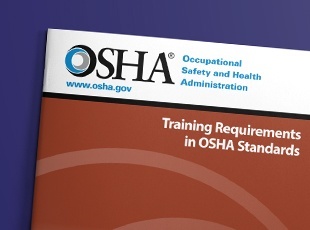News from the Occupational Safety and Health Administration front: OSHA has released a compiled booklet of the training requirements that responsible parties need to know in order to protect employees.
The guide, Training Requirements in OSHA Standards, introduces employers to training requirements in general industry, maritime, construction, agriculture and federal employee programs. The guide highlights the need for training as the first step to maximizing the improvements in engagement, profitability, and productivity, known at Optimum Safety Management as the Return on Safety™.
“Training is an essential part of every employer’s safety and health program for protecting workers from injuries and illnesses. […] Training in the safe way for workers to do their jobs well is an investment that will pay back over and over again in fewer injuries and illnesses, better morale, lower insurance premiums and more.”
Why Training is Pivotal
As we mentioned above, training of employees is one of the keys to maximizing your organization’s Return on Safety™, the significant gains in productivity, profitability, and engagement that come with an effective safety management program.
Knowing this, training (and recordkeeping of said training) is absolutely necessary for an organization. Why? In the event of an inspection or incident, one of the first questions an incident investigator will ask: “Did the employee receive adequate training to do the job?”
Training programs help ensure that safe jobs are no accident. Safe jobs exist because employers make a conscious decision, each and every day of the year, to make protecting workers a priority in the workplace.
Training: Part of a Complete Safety Management System
Training, whether it’s orientation training, ongoing, or specific, is only part of a complete safety management system. Do you know what else you need? Optimum Safety Management offers a 30-point safety management system assessment, which will highlight strengths, weaknesses, and opportunities for improvement in safety so that you can recognize the true value of and Return on Safety™.








